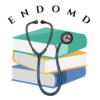High Blood Pressure
What is high blood pressure & why is it dangerous?
High blood pressure (also called hypertension) is a condition in which blood pressure remains elevated (generally greater than 140/90). Hypertension increases the work your heart is to perform which can lead to heart damage over time called congestive heart failure. In addition, the high force of the blood flow in hypertension can also damage arteries/blood vessels in the heart, brain, kidneys etc. In most instances, this damage occurs without patient having any symptoms and quite often the first symptom is that of complications that may occur in these patients. These complications include strokes, heart attack, congestive heart failure and kidney failure.
What causes high blood pressure?
The exact cause of high blood pressure is not known. It is likely the result of multiple genetic and environmental factors which alter cardiovascular and kidney functions, thus leading to high blood pressure. There are several risk factors which predispose one to high blood pressure. The 3 major risk factors are age, obesity, and family history. After age 60, 60% of us will have high blood pressure. High blood pressure is twice likely to occur if one or both parents have hypertension. The next 3 major risk factors include high sodium intake (greater than 3 g per day sodium chloride intake), excessive alcohol use and African American race.
How to lower high blood pressure:
Changes in lifestyle such as increased activity, weight loss and reduction in salt intake can have substantial effect on lowering the blood pressure. In some patients with mild and early hypertension, these measures may be enough to normalize blood pressure. In most patients, particularly those above the age of 60 years, one or more medications are needed to lower blood pressures. Generally 1 medicine may be enough if blood pressure is 20/10 mm Hg or less above the normal range.
Low sodium diet and hypertension:
Sodium is an essential nutrient and is needed by the body small amounts to maintain balance of body fluids. The dietary guidelines for Americans recommend adults limit sodium intake to less than 2300 mg per day. The average amount of sodium in the American diet is about 3400 mg per day. According to the Centers for Disease Control and Prevention (CDC), about 40% of sodium continued but Americans comes from 1 of the following food items:
- Deli meat sandwiches
- Poultry
- Dishes made from egg products
- Burgers
- Chips, crackers and popcorn
- Tacos and burritos
- Pizza
- Soups
Using the nutrition facts label is the best way to compare products. Use % Daily Value (DV) as a tool. The % DV is the percentage of the Daily value or a given nutrient in a serving of the food. As a general guide, 5% DV or less of sodium per serving is considered low, and 20% DV or more is considered high. Its important to keep serving size and the number of servings eat or drink in mind. The table below gives some examples of low salt versus high salt items for your reference.
Table: Low-salt versus High-salt Food Items:
| Low salt Use | High-salt Avoid |
| French fruit and vegetables | Canned vegetable and soups |
| Fresh meat, fish, or poultry | Cured, Smoked, & Processed meats (pepperoni, sausages, bacon, salami, deli meat) |
| Frozen vegetables | Canned food |
| Fresh seasonings (garlic, onions, and lemon and pepper) | Seasonings such as teriyaki sauce, soy sauce, garlic salt. |
| Unsalted snack foods such as unsalted popcorn and chips | Salty snack foods such as chips, crackers |
| Most restaurant / takeout foods | |
| Pizza |
In addition to lowering salt intake, diet that helps you losing weight will also help reduce blood pressure readings. Sometimes medications use for other conditions such as ibuprofen (also called Advil) or naproxen (Aleve) or medications for cough and congestion (such as decongestants) can increase your blood pressure or make it harder for you to control blood pressure.
How to lower high blood pressure with medications:
Luckily, we have a lot of options to choose from, when one has to take medicines to lower blood pressure readings. The major blood pressure medication classes are:
- ACE inhibitors or angiotensin receptor blockers (such as lisinopril, losartan, valsartan etc.)
- Calcium channel blockers (such as amlodipine or nifedipine XL or diltiazem XR)
- Diuretics (such as hydrochlorothiazide, indapamide, spironolactone)
- Beta-blockers (such as metoprolol ER, carvedilol, atenolol, nebivolol)
- Alpha blockers (such as doxazosin)
- Vasodilators (such as hydralazine)
- Centrally acting medications (such as clonidine)
Quite often combination medications are needed to control blood pressure in patients, particularly older patients. If blood pressure is more than 20/10 mmHg above normal, more than 1 medications likely to be needed to lower the blood pressure and reduce the risks of strokes and heart disease.
Post Disclaimer
We are not your healthcare provider, and your use of this website does not establish a patient-client relationship. All the information contained on this website is for informational purposes only. No material on this site is intended to be a substitute for professional medical advice (diagnosis, treatment, testing or nutritional information). Always seek the advice of your physician or qualified healthcare provider with any questions you may have regarding medical or health-related conditions or treatment. Your healthcare provider knows your condition or situation well and can give you specific advice which would be appropriate for your condition/situation. Your healthcare provider can also guide you more accurately about injection techniques, dietary interventions and the use of medical technology that is most pertinent and suitable for you. Please do not disregard professional medical advice or delay in seeking it because of something you may have read on this website.

